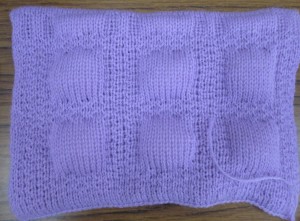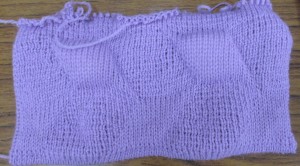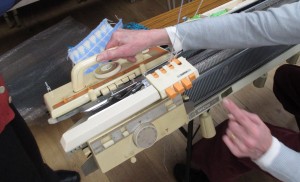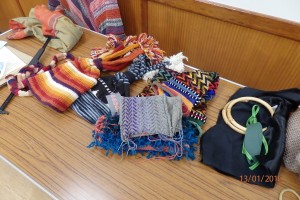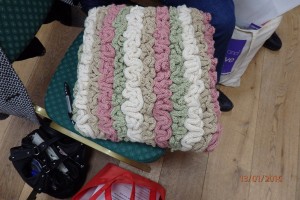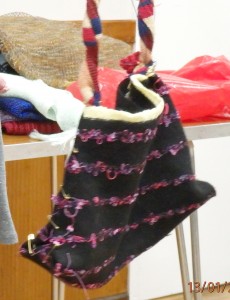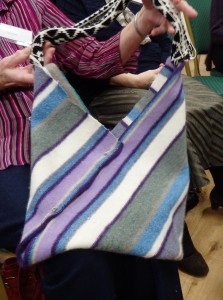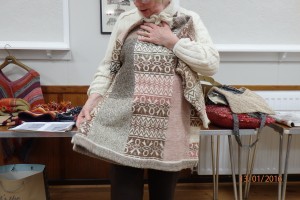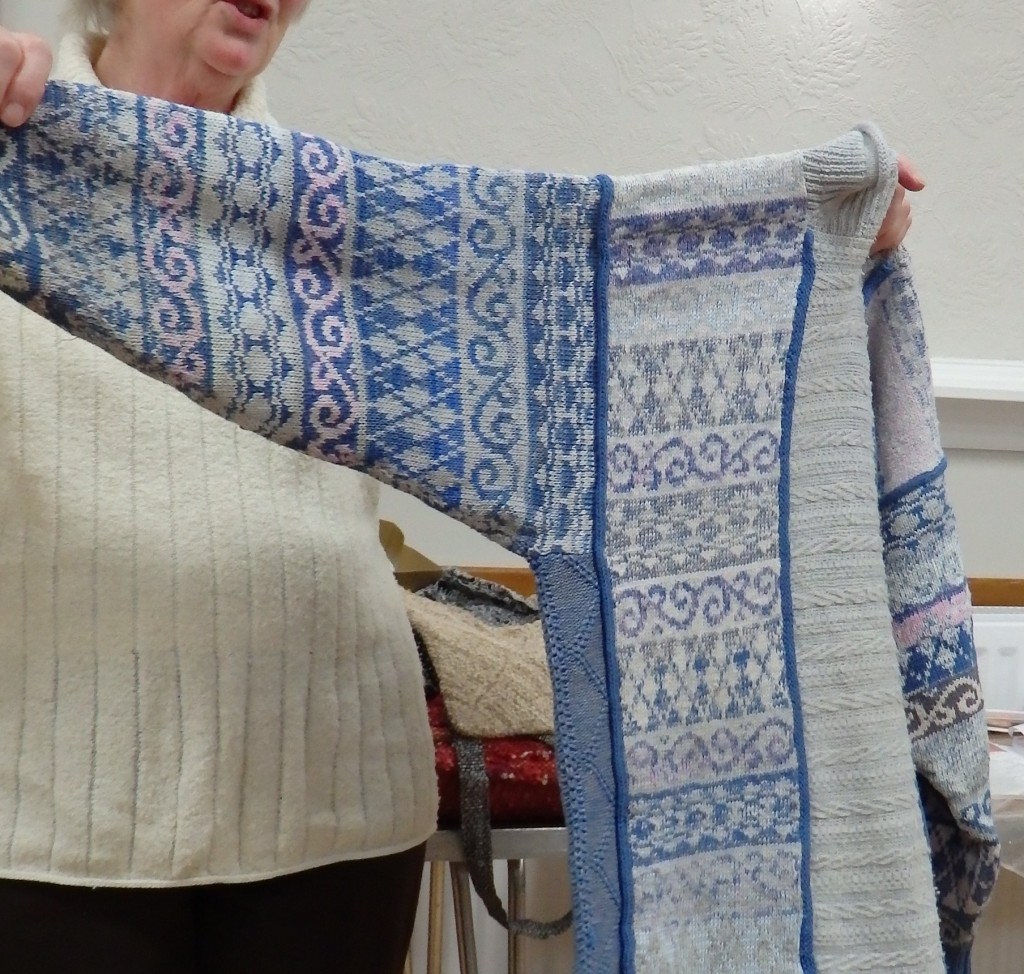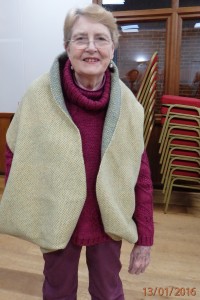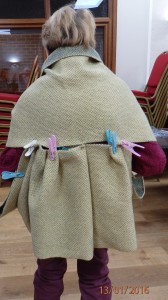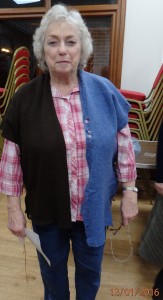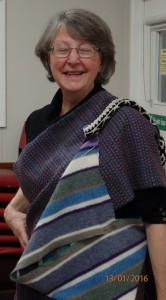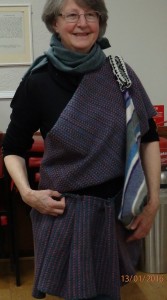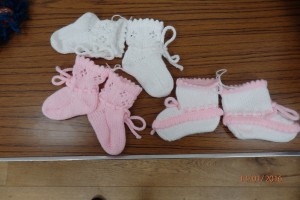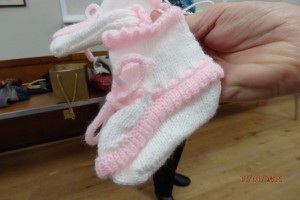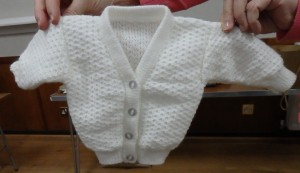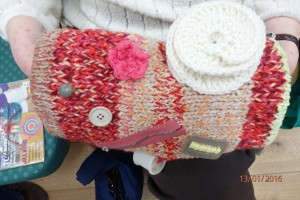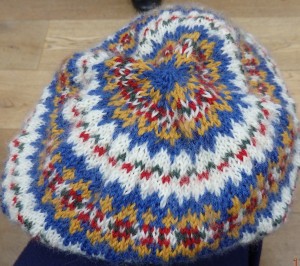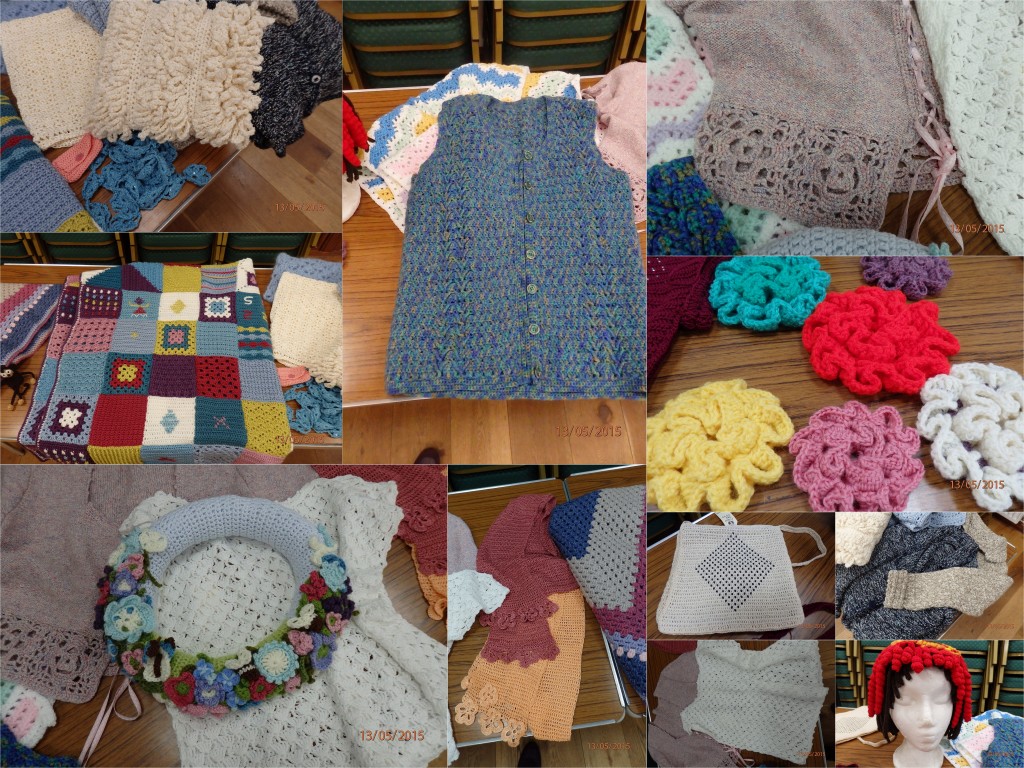Advanced Use of the Ribber
This month the topic was “advanced use of the ribber”, April, Margaret and Frances demonstrated various techniques:
Double Jacquard – this technique creates a fairisle like fabric with no floats knitting all needles on both beds. To create this, it helps to use a double bed colour changer on the Brother Machines or the general purpose colour changer on Knitmaster machines.
It is important to follow the colour changer instructions closely, as you must start from the correct side to sequence the colours correctly.
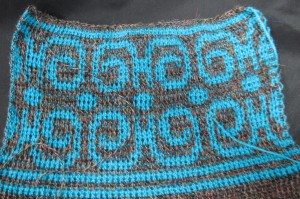
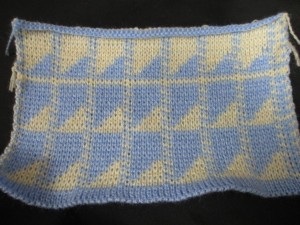
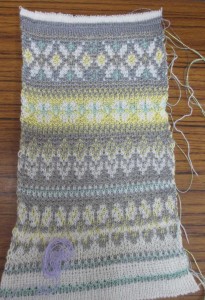
Racking stitches on the ribber bed to give a zigzag pattern on the purl side of the fabric, and hand transferred lace holes round a diamond shaped block were created by transferring stitches between the ribber and the main bed.
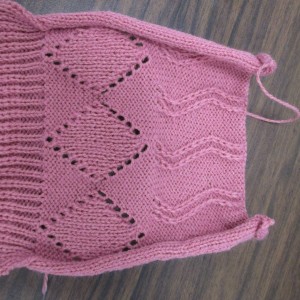
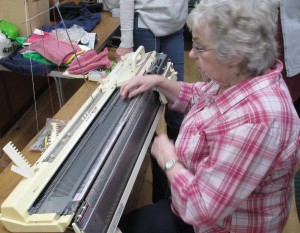
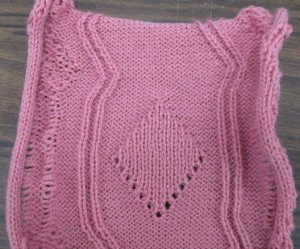
The blue samples were machine knit quilted fabric, this used the ribber with patterning, either punchcard or electronic to create “pockets” which were stuffed with polyester toy stuffing, Depending on the punchcard used a variety of designs can be knitted, it is important that the designs have solid areas for patterning. Margaret also demonstrated the Brother ribber transfer carriage.
After the initial talks, everyone was encouraged to watch the demos in groups and try out the techniques for themselves.
_____________
